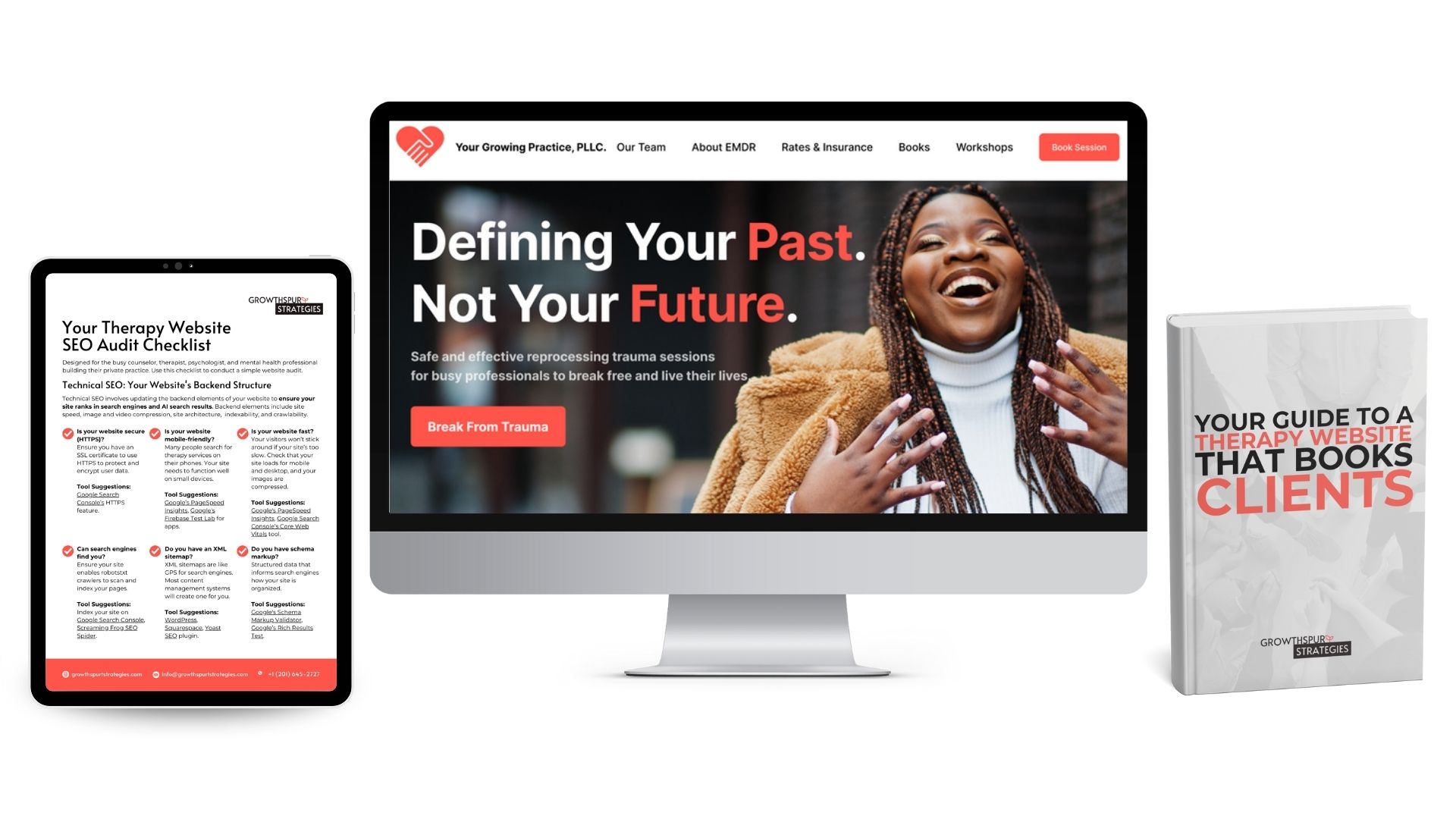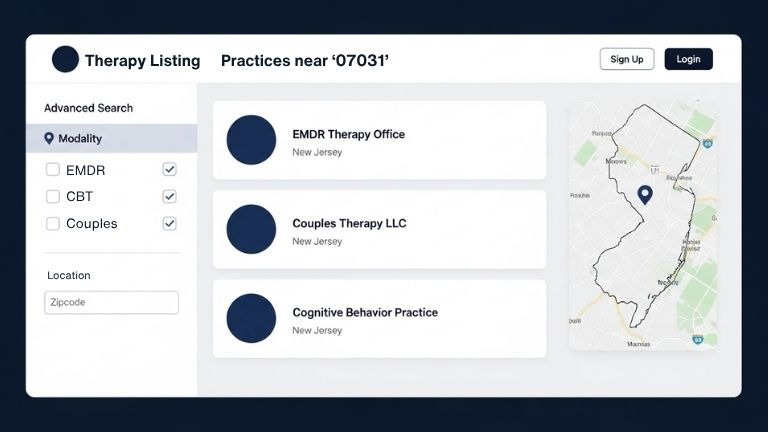Listen to this article:
To successfully market your practice and counseling niche on your website, you need the golden trifecta: winning site design, logical page structure, and strategic content. Transform your website from a digital brochure into a client-converting machine. This article provides a tangible action plan for therapists, counselors, and mental health professionals to connect with their ideal clients online.
Table of Contents
- Why Your Website is Your Best Marketing Instrument
- Aligning Content with the Sales Funnel
- Developing a High-Converting Niche Website Content Strategy
- FAQs About Niche Counseling Website Design
Why Your Website is Your Best Marketing Instrument
Understand that the moment someone arrives on your website, they have a need. They may not understand what it is, or how to name it, but it’s real.
Your visitor will determine if they’re in the correct place within a matter of seconds. Your goal is to communicate your practice’s niche and value proposition as soon as possible.
Clarity is Your Ultimate Filter
Your website serves as both a qualification and a disqualification tool. Your homepage must answer the question: “Who do you help, and how?”
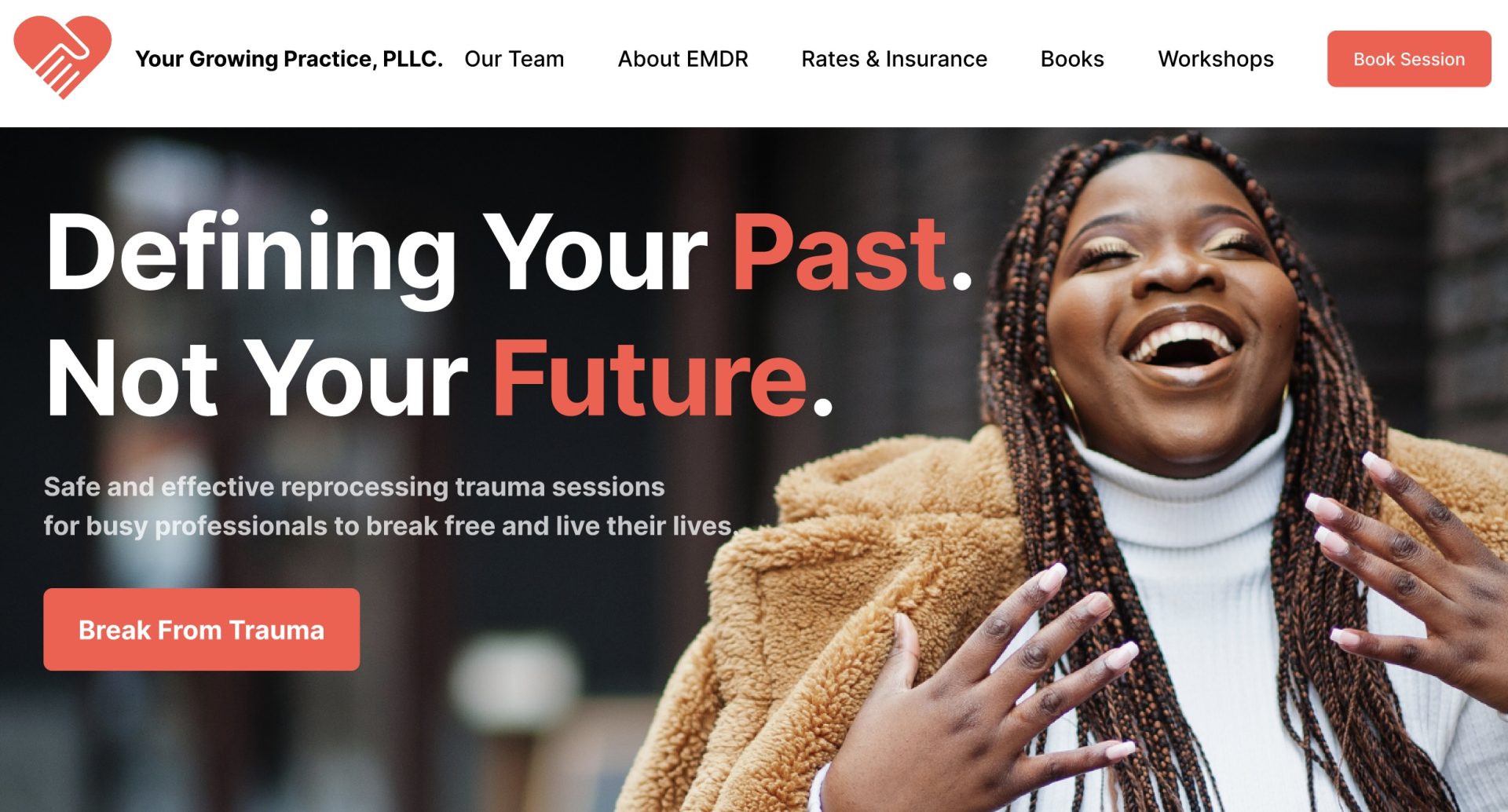
If you specialize in EMDR therapy for the treatment of trauma-related stress, your homepage should prominently display this information at the top. Your website structure should separate pages by modality, condition, technique, symptoms targeted, and any other search criteria that fuel the online behavior of your ideal clients.
The logic behind your website’s overall structure and the content you showcase is driven by the question: “Will I find relief by engaging with this professional?”
Aligning Content with the Sales Funnel
Taking a strategic approach to content development ensures your website acts as a natural continuation of any conversation someone has with your brand online. Great content blends marketing principles with psychology, rooted in continuous research into your ideal clients’ online (and offline) search behavior.
Where Marketing Meets Psychology
When prospective clients search for information online, their queries may be symptomatic rather than commercial.
For example, someone may enter a search query, “what are the symptoms of trauma” (symptomatic) instead of “EMDR therapists near me” (commercial). Your online content strategy must anticipate this distinction because both of these online visitors are located in two different stages of the marketing and sales funnel.
| Funnel Stage | Client Mindset | Goal of Content |
| Awareness | “What are these symptoms?” | Answer high-level questions and define symptoms. |
| Consideration | “What are my options?” | Detail your modalities and specific service offerings. |
| Decision | “Who do I book?” | Provide clear calls-to-action and logistical information. |
Your goal is to learn how your clients search for information online, and then create content that adheres to the needs tied to where they are as to encourage them toward the Decision stage.
To better understand the marketing and sales funnel as it relates to marketing a mental health practice, read How to Market Your Therapy Private Practice with Funnel-Based Content or watch the video below!
Developing a High-Converting Niche Website Content Strategy
Achieving booked sessions through your website requires active and continuous message testing, content creation, and website maintenance. This action-oriented process breaks down the work into three steps for mental health private practice owners:
Step 1: Audit Your Current Content and Research Search Intent
Figure out what conversation topics and themes are most important to your ideal clients, backed by evidence of search intent. Examples of content include blog articles, FAQs, and explainer videos that address high-level, symptomatic search queries.
After auditing your existing content, review it for relevance. If you have an article on “5 Ways to Cope with Stress,” ensure it drives someone to your downloadable one-pager about stress management services.
Keeping someone consistently interested by providing additional resources that help them address their need is ultimately what benefits your online prospective clients and earns trust.
Step 2: Define Your Audience Segments Across Your Funnel
Building your content repository for the various conversations your clients are having online requires an understanding of your marketing and sales funnel. Each funnel is unique to each business model, industry, and service, so for new practices, it’s critical to gather data (feedback) on as many published content pieces as possible.
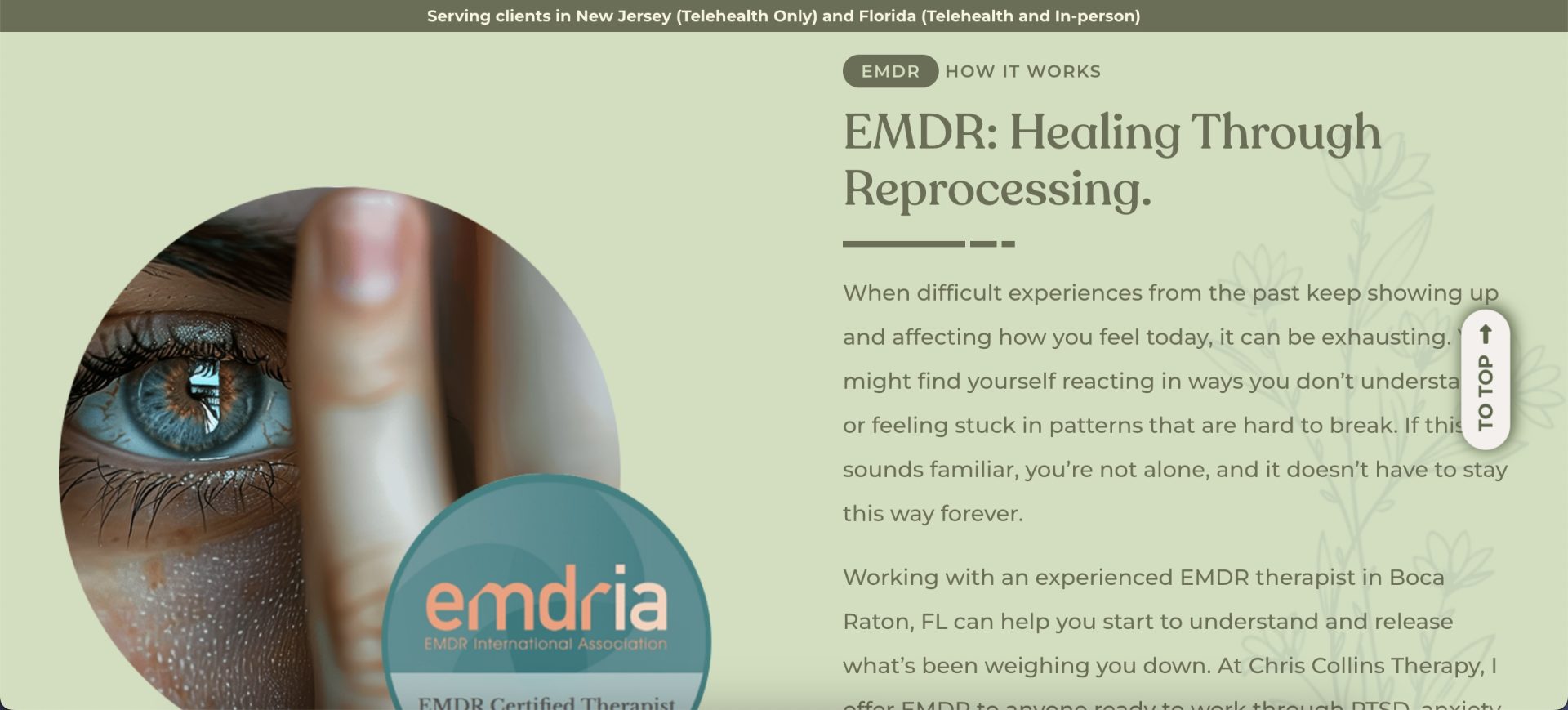
Remember, your dedicated Service Pages and your About Page serve functions for visitors in different stages. Outline your methods and use specific, detailed language about your modalities and approach on your pages to clearly articulate why your method is the best solution for their specific problem.
Step 3: Build a Website Content Calendar and Test
Establish an understanding of which content has the most value in the form of engagement and conversion, and then build your ongoing calendar around those topics.
Many practice owners have trouble coming up with content ideas for their online audiences, but it’s actually easier than you think. Read where great content ideas originate and how to develop your own genuine content.
A great piece of content is followed by a clear next step. Strong, punchy, and clear Calls-to-Action (CTAs) guide the visitor along the journey. Short CTAs should use action-oriented language, like “Schedule a Free Consultation,” “Book Your First Session,” or “Get Started Today”.
Long CTAs should explain the purpose of a resource or video and encourage your visitor to click through to the next video on the promise of obtaining different, but still relevant information.
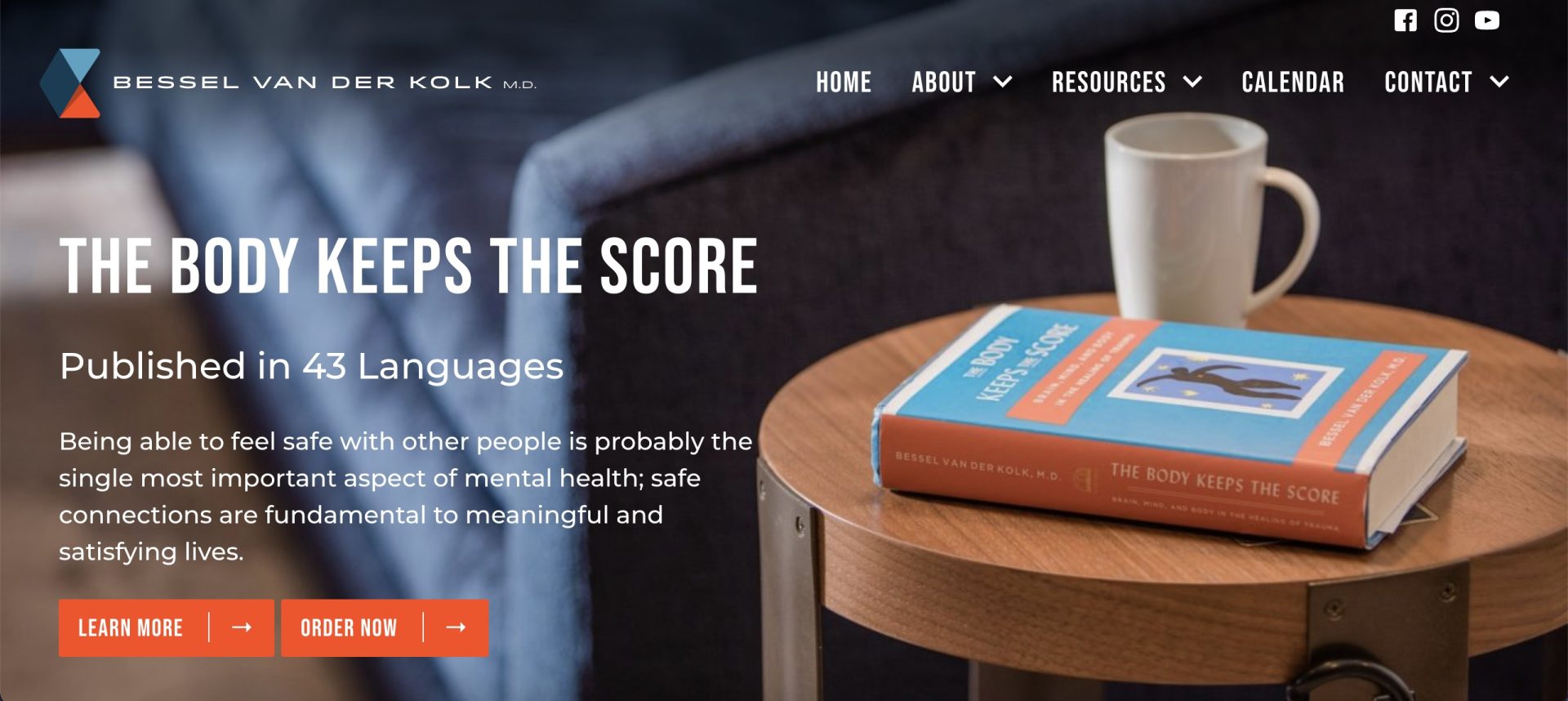
Email capture is among the most powerful approaches to converting visitors down the funnel simply because they’re people who have volunteered to hear from you.
FAQs About Niche Counseling Website Design
Q: How long does it take to see results?
A: Like all marketing, there is no exact timeline, but the quality of your results will depend on the consistency of your efforts. Ensure you’re actively and continuously testing your messaging, creating valuable content, and researching your clients’ online search behaviors, and you will see results. Focus on communicating your niche services, modality, and approach rather than writing general language that tries to cover too many bases.
Q: Can I scale content without a full team?
A: Absolutely. Focus and clarity are your biggest assets. Your website should be simple and human-centered, never cluttered or overwhelming. Showcase your expertise by focusing on the specific niche areas for which you are a domain expert. While maintaining separate, focused pages is crucial, take care not to create so many pages that your website becomes unmanageable. This is critical if you’re managing your own website content.
Q: Do my opt-in forms need to be HIPAA compliant?
A: It depends entirely on the information you collect. Forms that only gather name, email, and phone numbers for the express purpose of general marketing are not required to be HIPAA compliant. But forms that collect Protected Health Information (PHI), such as previous medical history, social security numbers, or insurance data, must be HIPAA compliant. Check out the Department of Health and Human Services website for information on your responsibilities as a covered entity.
Start Booking Clients
A high-converting therapy website relies on the golden trifecta: winning design, structure, and content strategy. This article briefly touched on design and content, but performance is also key.
Learn about SEO basics, site and speed performance fixes, topic and keyword research, HIPAA compliance considerations, and how to test your value-based messaging in our free guide below.


